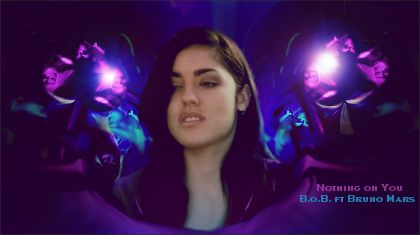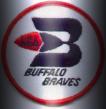foxsports.comGAME TIME: Spurs 104, Jazz 98
After scrutinizing Chris Paul's most recent game against Detroit , it's only fair to investigate Deron Williams' performance in San Antonio.
GOOD STUFF
Williams demonstrated that he can accurately complete every type of pass in the book with impeccable timing and perfect touch including entries, lobs, skips, as well as delivering the ball to curling shooters directly into their shooting hands. But the one pass-situation that sets him apart from all the other young point guards involves the screen/roll. In the tradition of John Stockton, Williams was always on the money here.
What makes Williams' passwork even more effective is that he doesn't need to start the pass at the top of his dribble. He can go down, get the ball just as it comes off the floorboards, and then execute a quick, snappy pass. This little twist is enough to catch the defense slightly unaware.
Overall, Williams registered 10 assists.
Williams always knew exactly where Carlos Boozer was and where Boozer was going.
Williams showed his strength by taking Tony Parker into the pivot and producing two buckets and two fouls.
Williams' deft handle has enabled him to master a devastating step-back jumper that's especially accurate when he pulls left. In a critical last-minute sequence, his drive-fake and step-back 3-ball staggered and nearly floored Bruce Bowen.
Williams' strength allowed him to bust through a double-team, but he was also quick enough to simply beat Parker into the middle on five occasions.
Williams was always focused on facilitating Utah's offense and didn't force a shot, a pass or a dribble. Indeed, he took only 15 shots (making nine) while scoring 28 points.
Although Bowen gave him a hard time in the second quarter, Williams was able to abuse the Spurs' defensive ace in the closing minutes of the game with the aforementioned trey and a powerhouse layup as well as a hard drive into the paint that drew a foul. (For the game, Williams was 9-of-12 from the stripe.)
He also set at least five courageous screens against the Spurs' bigs.
His is the number that was called on the two occasions when the Jazz ran an under-in-bounds play. Williams curled around screens, took a direct inbounds pass and unleashed his jumper making 1-of-2.
In defending against S/Rs that involved Parker, Utah's game plan was to have Williams overplay the screen, force Parker baseline and let the big men rotate into the middle. Williams carried out his part of the deal to perfection, but his teammates were often too slow to hinder Parker's quick-stepping progress through the paint.
If Williams was beaten by Parker on several straight-up drives to the right, he was also able to occasionally bump Parker off his desired route. Twice Parker tried to take Williams with his left hand, and was stymied both times.
Overall, Williams did a better job defending Parker than Parker did defending him. Williams drew a charge, had excellent pressure on two of Parker's jumpers (TP made one), and on one iso stayed in front of Parker and forced an awkwardly missed flipper. Of Parker's 16 points (5-of-14, seven assists, five turnovers), only 11 were scored against Williams.
NOT SO GOOD STUFF
Williams was scoreless in the second quarter when he was defended by Bowen but part of the onus falls on Jerry Sloan. Time and again, the Jazz tried to take advantage of the Williams-Bowen matchup by running S/Rs but this was a huge mistake. By encouraging contact, the Jazz not only played into Bowen's strength, but allowed San Antonio's active bigs to jam up the action. Instead, the Jazz should have cleared a side and let Williams use his speed to escape Bowen's clutches.
Against Jacque Vaughn, Williams drove to the rim and tried to drop a pass into Boozer but the Spurs had collapsed into the paint and the pass was stolen.
Against Bowen, the same scenario was repeated.
Williams' third turnover came at the end of the second quarter when he was trying to take Bowen on a clearout from the left wing and simply lost control of the ball.
In the first quarter, the Spurs had positioned the ball on the opposite wing and Williams anticipated that a pass would be made to Matt Bonner, who was open in the middle because his defender had gone to two-time Manu Ginobili. So Williams left Parker and jumped into the expected passing lane but Ginobili executed a clever skip pass straight to Parker, who bagged a 20-footer.
In the second half, the Jazz tweaked their S/R defense and had Williams go under the screens. This tactic worked to perfection against Parker, but Vaughn took advantage of two open looks by dropping a pair of long-range jumpers. Again, the fault here was Utah's game plan.
How good is Williams?
He's smooth, smart, disciplined, strong, quick to the hoop, able to create (and make) his own shots, and best of all, he's a pass-first, pure-minded point guard. (Unlike Parker, who's basically a scorer.)
If Williams had more license to shoot, he could be among the league's leading scorers. If he had more dependable shooters to work with, he routinely would lead the NBA in assists.
In other words, if Jason Kidd and Steve Nash are the Kings of the Point Guard Realm, then Williams is the Crown Prince.
Hopfully He'll be the next Kidd.
Results 1 to 1 of 1
-
12-09-2007, 06:49 PM #1
 Williams is league's best young PG-Atrical about Daron Williams by Charlie Rosen
Williams is league's best young PG-Atrical about Daron Williams by Charlie Rosen







 Reply With Quote
Reply With Quote